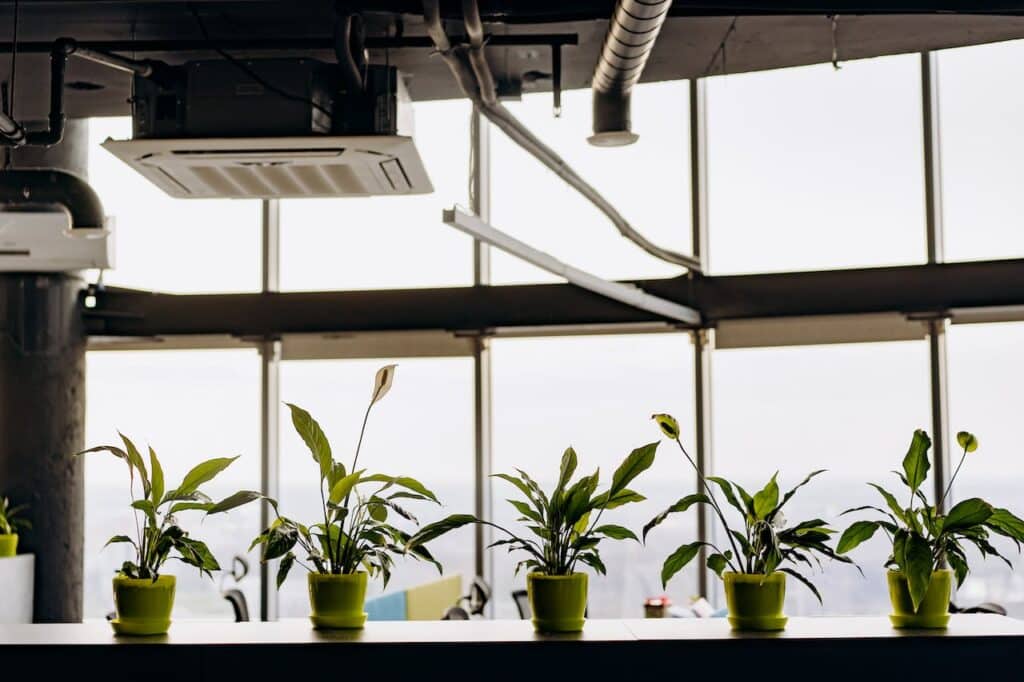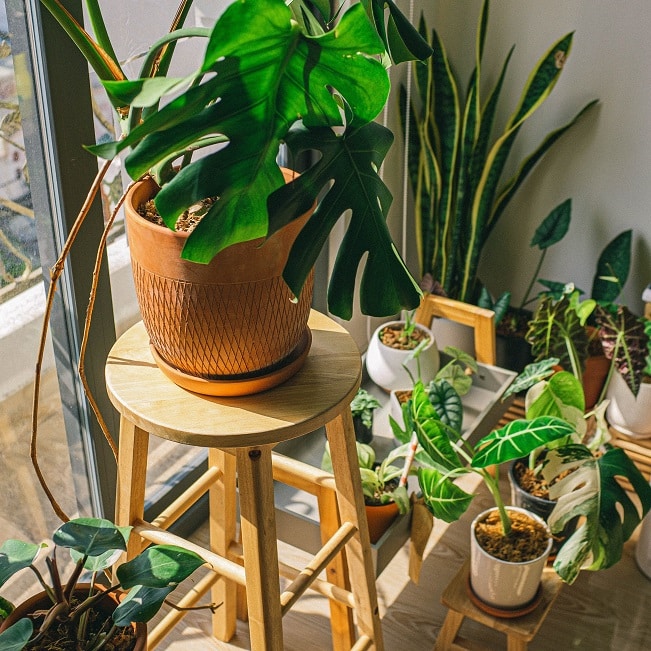Imagine the joy of celebrating Christmas while also witnessing the stunning transformation of your indoor plants thriving with lush green leaves and vibrant flowers. It may seem like a magical holiday miracle, but what if a scientific explanation existed? In this intriguing article, we explore the fascinating question of can Christmas lights help plants grow. Get ready to unravel the hidden potential of those twinkling lights and discover how they might just be the secret to your plants’ winter revival.

Overview of Plant Lighting Requirements
Understanding Light Spectrum
To understand how Christmas lights can help plants grow, it is essential to grasp the concept of light spectrum. Light is made up of various wavelengths, and each wavelength corresponds to a specific color. The visible light spectrum includes red, orange, yellow, green, blue, indigo, and violet light. Each of these colors has a different effect on plant growth, as they are absorbed by different pigments in the plants.
How Plants Use Light
Plants primarily use light for photosynthesis, the process by which they convert light energy into chemical energy to fuel their growth. Chlorophyll, the primary pigment responsible for absorbing light in plants, absorbs light most efficiently in the blue and red parts of the spectrum. These wavelengths drive the majority of photosynthesis in plants and are crucial for their development.
Light Intensity and Distance
Apart from light spectrum, both the intensity and distance of the light source play a vital role in plant growth. Light intensity refers to the amount of light energy emitted by a source, and it affects the rate of photosynthesis. The distance between the light source and the plants also influences the intensity of light received by the plants. Understanding these factors will help us better evaluate the potential impact of Christmas lights on plant growth.
Role of Different Light Colors in Plant Growth
Blue Light and Its Impact
Blue light has a shorter wavelength and higher energy, making it essential for plant growth. It stimulates vegetative growth, regulates plant structure, and promotes the development of leafy green foliage. Additionally, blue light plays a crucial role in phototropism, which is the ability of plants to grow towards or away from light sources. By affecting plant hormones, blue light can influence the direction and strength of plant growth.
Red Light and Its Impact
Red light, with its longer wavelengths and lower energy, is essential for flowering and fruiting processes in plants. It triggers the production of flowering hormones and facilitates the transition from the vegetative to the reproductive stage. Furthermore, red light promotes elongation of stems, which is vital for plants to reach optimal light exposure and maximize their photosynthetic capacity.
Mix of Different Light Colors
While blue and red light are crucial for plant growth, a balanced spectrum that includes other colors is also important. Green light, for example, is not absorbed as efficiently as other colors, but it helps regulate the opening and closing of stomata, which are crucial for gas exchange in plants. Yellow and orange light also contribute to various physiological processes in plants, such as carotenoid synthesis and stress responses. Thus, a combination of different light colors is necessary for comprehensive plant growth.

Specifics of Christmas Lights
Types of Christmas Lights
When considering the use of Christmas lights for plant growth, it is important to understand the different types available. Incandescent lights are traditional, heat-emitting bulbs that have been widely used for holiday decorations. They produce a warm, soft glow but can get very hot. LED lights, on the other hand, are energy-efficient and generate less heat. They come in a variety of colors and are commonly used for indoor and outdoor Christmas decorations.
Spectral Output of Christmas Lights
The spectral output of Christmas lights is an essential factor to consider when evaluating their potential impact on plant growth. LED lights, in particular, can be manufactured to produce specific wavelengths or colors. However, the exact spectral output of different brands or types of Christmas lights may vary. It is essential to evaluate the specific light spectrum provided by the Christmas lights being used, as it will determine the potential influence on plant growth.
Intensity and Distance of Christmas Lights
The intensity and distance of Christmas lights can significantly impact plant growth. The intensity of light received by plants is determined by the brightness of the Christmas lights and their proximity to the plants. If the lights are too dim or placed too far from the plants, the light intensity may not be sufficient for photosynthesis. Conversely, if the lights are too bright or too close, they may cause light burn, heat stress, or sunburn on the plants. Finding the right balance is essential to avoid potential harm to the plants.
Potential Benefits of Using Christmas Lights for Plant Growth
Cost-Effective Solution
One of the key advantages of using Christmas lights for plant growth is their affordability. Compared to specialized grow lights, which can be expensive, Christmas lights are a cost-effective alternative. They offer a budget-friendly option for growers who want to experiment with indoor gardening or supplement natural light for their plants.
Easy Availability
Another benefit of using Christmas lights is their wide availability. During the holiday season, Christmas lights are readily accessible in stores and online. This convenience allows plant enthusiasts to easily obtain and experiment with different types of Christmas lights to find the most suitable options for their plants.
Direct Influence on Specific Stages of Growth
By adjusting the light spectrum provided by the Christmas lights, growers can have a direct influence on specific stages of plant growth. For instance, increasing the amount of red light during the flowering stage can promote bud formation and enhance fruiting. Similarly, incorporating more blue light during the vegetative stage can stimulate leafy growth and overall plant vigor. This level of control allows growers to tailor the lighting conditions to meet the specific needs of their plants.

Challenges of Using Christmas Lights for Plant Growth
Insufficient Light Intensity
One of the primary challenges of using Christmas lights for plant growth is the potential for insufficient light intensity. Christmas lights are generally designed for decorative purposes rather than providing optimal light for plant growth. Due to their lower brightness and limited range, they may not deliver enough light intensity for plants to carry out photosynthesis effectively.
Partial Light Spectrum
While Christmas lights can emit various colors, they often lack a balanced, full light spectrum necessary for robust plant growth. Some Christmas lights may have an imbalanced amount of certain colors, which can affect the plant’s overall health and development. It is crucial to consider the specific light spectrum of the Christmas lights being used and supplement any missing wavelengths if necessary.
Potential Heat Damage
Incandescent Christmas lights, in particular, can generate a significant amount of heat. This heat output can potentially damage plants if the lights are placed too close or left on for extended periods. Heat stress can affect plant growth, cause leaf burn, and even lead to plant death. LED Christmas lights, while generating less heat, still require appropriate placement and monitoring to ensure the plants are not exposed to excessive temperatures.
Comparing Christmas Lights with Grow Lights
Spectrum Differences
The spectrum provided by Christmas lights and specialized grow lights can differ significantly. While grow lights are designed specifically to meet the light requirements of plants, Christmas lights are primarily designed for decoration. Grow lights typically provide a more comprehensive light spectrum, with a balance of blue, red, and other colors necessary for optimal plant growth. Christmas lights, however, may lack certain wavelengths or have an imbalance in their spectral output.
Intensity Differences
Another aspect to consider when comparing Christmas lights and grow lights is the light intensity they deliver. Grow lights are engineered to provide high-intensity light suitable for plant growth. They are often optimized to deliver the precise amount of light energy required for photosynthesis. Christmas lights, on the other hand, may not offer the same intensity and may need to be supplemented with additional light sources to ensure plants receive enough light.
Cost Differences
Cost is also a significant factor to consider when comparing Christmas lights and grow lights. While Christmas lights are generally more affordable, grow lights can be more expensive due to their specialized design and higher light output. However, the higher cost of grow lights often correlates with their ability to provide the optimal light spectrum and intensity required for robust plant growth. The choice between Christmas lights and grow lights will depend on the specific needs of the grower and their budget.
Practical Tips for Using Christmas Lights for Plant Growth
Proper Distance and Placement
To maximize the potential benefits of using Christmas lights for plant growth, it is crucial to ensure proper distance and placement. Hanging or positioning the Christmas lights at an appropriate distance from the plants will help maintain an optimal light intensity without causing heat damage. Experimenting with different heights and angles can help achieve the desired coverage and light distribution.
Choosing the Right Type of Christmas Lights
Considering the different types of Christmas lights available, choosing the right one for plant growth is essential. LED lights are generally recommended due to their lower heat output and energy efficiency. When selecting LED Christmas lights, opt for those that provide a balanced spectrum or can be adjusted to emit the necessary wavelengths for healthy plant development.
Avoid Excessive Heat Build-Up
As mentioned earlier, heat can be a potential issue when using Christmas lights for plant growth. To prevent heat damage, avoid placing the lights too close to the plants and monitor the temperature regularly. If necessary, use fans or other cooling measures to prevent excessive heat build-up in the growing area. Proper airflow and ventilation will help maintain a suitable environment for plant growth.
Scientific Studies and Experimental Results on Christmas Lights and Plant Growth
Previous Experiments and Their Findings
Several studies have examined the effects of different light sources, including Christmas lights, on plant growth. These experiments often vary in methodology, plant species, and light setups, leading to a range of findings. Some studies have demonstrated positive effects of Christmas lights on plant growth, including increased leaf area, chlorophyll content, and biomass accumulation. Other studies, however, have shown that Christmas lights may not provide sufficient light intensity or the optimal light spectrum required for robust plant growth.
Current Research Progress
Ongoing research continues to delve into the potential impact of Christmas lights on plant growth. Researchers are exploring ways to optimize the spectral output of Christmas lights to provide a more balanced light spectrum for enhanced plant development. Additionally, advancements in LED technology are leading to the creation of specialized horticultural LED lights that provide tailored lighting solutions for indoor plant growth. These advancements contribute to our understanding of how Christmas lights and other light sources can be utilized effectively in plant cultivation.
Alternatives to Christmas Lights for Indoor Plant Growth
Using Proper Grow Lights
Opt for specialized grow lights as a reliable and efficient solution for indoor plant growth. These lights mimic natural sunlight, providing optimal spectrum and intensity. With adjustable settings and advanced features, they offer precise and effective lighting.
Exploitation of Natural Light
Another alternative to using Christmas lights is harnessing natural light. Placing plants near windows or in sun-drenched areas can provide a free and abundant light source. However, it is crucial to consider the duration and intensity of natural light as they vary throughout the year. Supplementing natural light with artificial light sources may be necessary, especially in areas with limited sunlight or during the winter months.
Hydroponics and Vertical Farming
Hydroponics and vertical farming revolutionize plant growth, maximizing space with water-based systems and stacked platforms. Specialized grow lights provide precise conditions, ensuring optimal care for plant growth in controlled environments.
Conclusion: Can Christmas Lights Really Affect Plant Growth
Situational Applicability
While Christmas lights have the potential to contribute to plant growth, their effectiveness may vary depending on different factors. The situational applicability, including the type of Christmas lights, their spectral output, and the specific light requirements of plants, greatly influences the outcome. By carefully selecting and using Christmas lights, growers can create an environment that supports better plant growth.
Long-Term Viability
Christmas lights may offer a cost-effective and easily accessible option for short-term experiments or small-scale plant growth. However, their long-term viability may be limited due to potential challenges such as insufficient light intensity, partial light spectrum, and heat damage. For sustained and consistent plant growth, it is generally recommended to use specialized grow lights.
Future Prospects
The ongoing research and advancements in lighting technology provide promising prospects for harnessing the benefits of Christmas lights for plant growth. By improving the spectral output, light intensity, and energy efficiency of Christmas lights, it is possible to create more effective lighting solutions. Combining the convenience and availability of Christmas lights with the precision and performance of specialized grow lights could unlock new possibilities for indoor gardening and sustainable plant cultivation.




